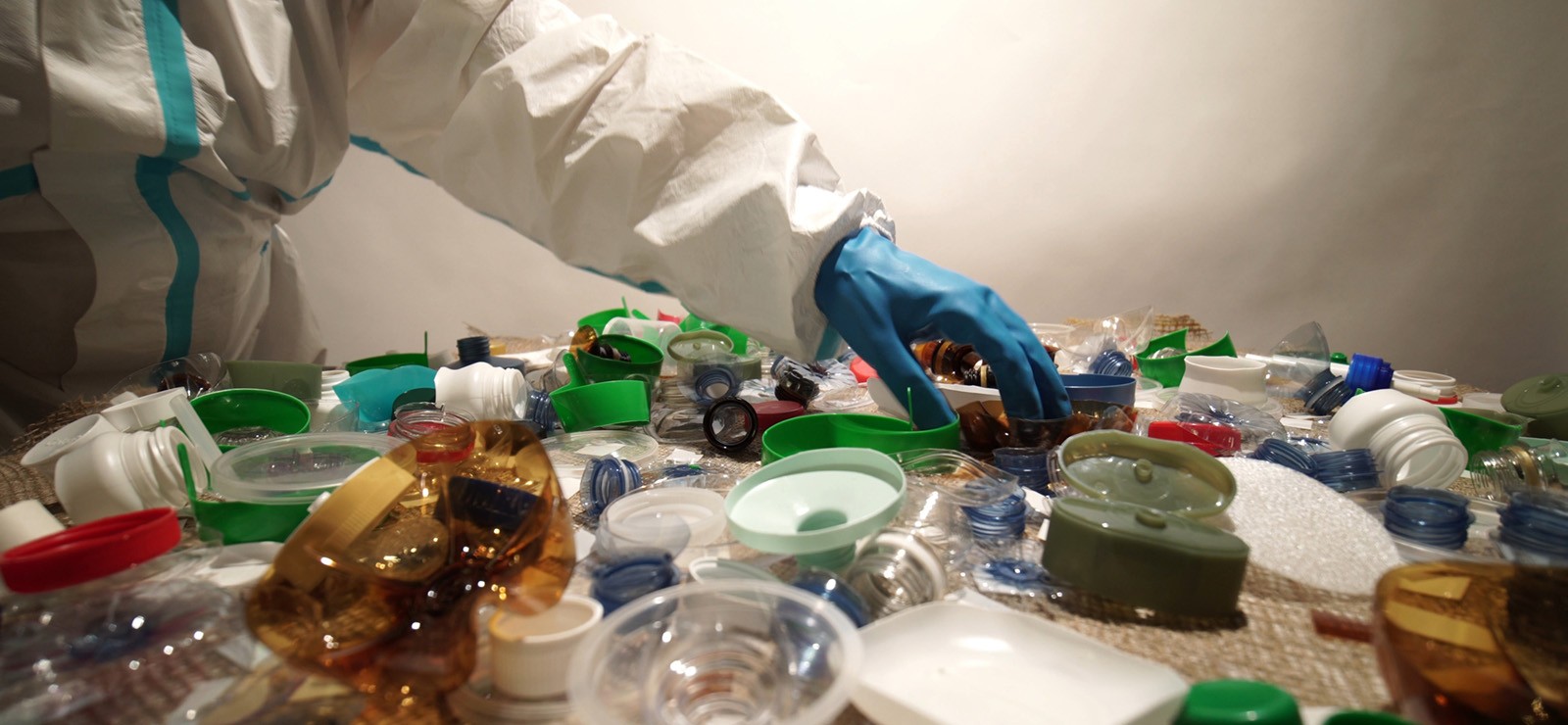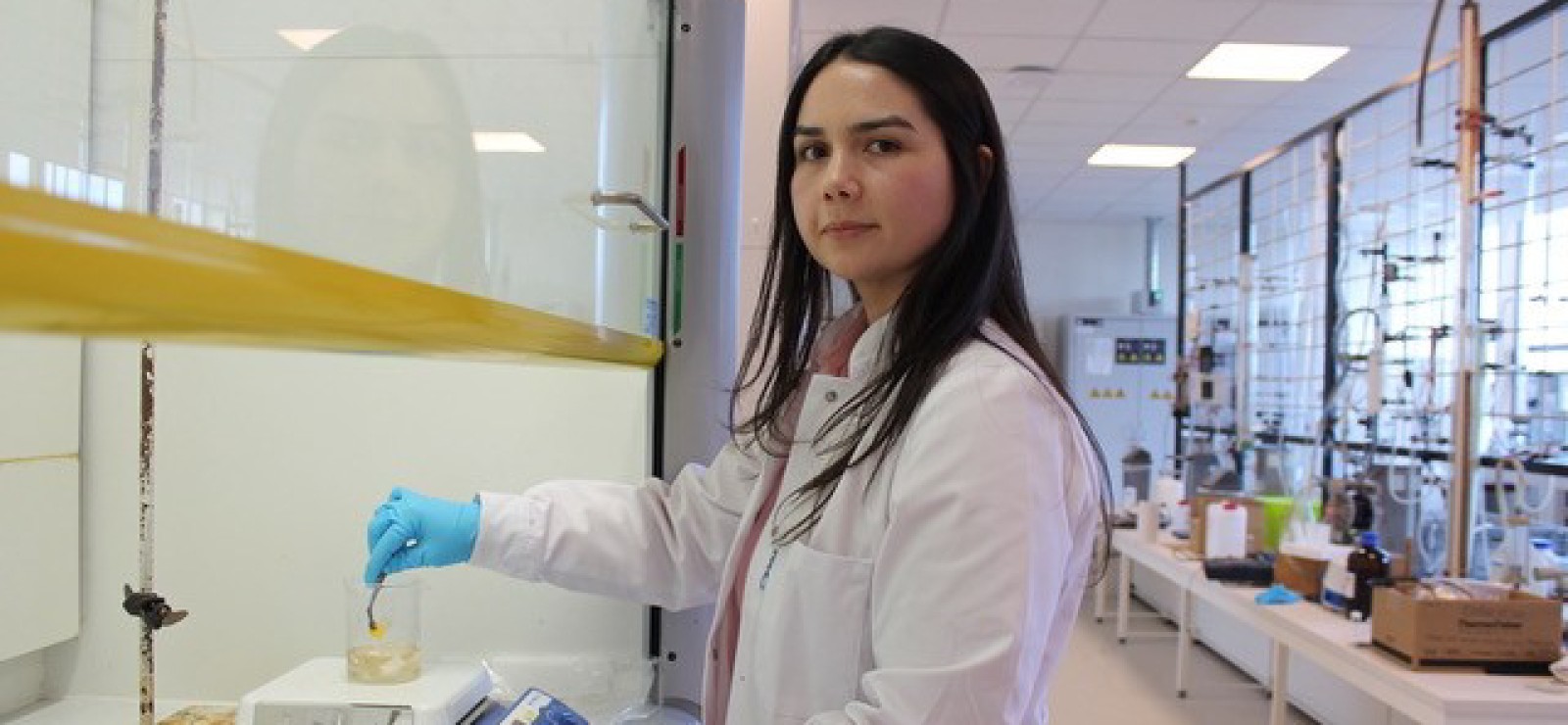Of all the plastic waste that we are currently sorting, too little is recycled properly (or even at all). As a Chemist at Ghent University, Sibel Ügdüler is developing methods for high-quality recycling, which in her opinion could resolve a serious recycling problem. The industry is watching with interest. Her research was awarded the Eos Pipet. With this award, science magazine Eos and the Young Academy award the most promising young researcher of the moment.
“Plastic waste is a huge problem”, says Sibel Ügdüler, as a chemical expert and plastic specialist (in the faculty of Bioscience Engineering). “That’s why I am so pleased that I can have an impact on society with my research.”
Sibel is seeking and developing new ways to recycle plastic sustainably. With quality recycling she hopes to close the plastic circle, which is presently far from closed, despite the fact we pop our plastic waste so neatly into the blue plastic-recycling (PMD) bag. Her research, with which she recently gained her PhD, focuses on separating plastic layers that are stuck together and removing ink from plastic packaging .
Sorting is not the same as recycling
In 1950, 1.5 million tons of plastic were produced worldwide; in 2018, that number rose to 359 million tons. If we wish to avoid drowning in that plastic soup we must improve our recycling.
“We would all like to believe that the plastic pots and film that we separate are recycled into new pots and foil”, says Sibel. “Unfortunately it is not the case.”
Not all plastic that is collected is actually reused. In 2020, 25 per cent of the plastic packaging waste in Europe was still thrown on the dump. 42 per cent ended up in the incinerator. The European Green Deal aims for 55 per cent of waste to be properly recycled by 2030. Sibel Ügdüler: “Preferably into premium plastic. But for many types of plastics this is still easier said than done.”
Colourful print and different layers
We do recycle PET bottles into new PET bottles. They are made of one type of plastic, which simplifies the recycling process. “Most other plastic packaging is colourfully printed, in order to appeal to consumers in the supermarket shelves. But also to communicate essential information about the product inside. All those colours make it simply impossible to recycle the packaging into transparent plastic.”
“On top of that, plastic packaging is often made of different layers of totally different types of plastic. This combination of layers is designed to keep the packaged food fresh for as long as possible. They are stuck tightly together. However, if you want to reconvert all those plastics or polymers into a premium material, you must start by separating them.” And that’s where the problem lies.
Downcycling rather than recycling
“Used plastics are not currently being separated or de-inked. They are recycled together into low-value black plastic granules. The only products these can be used for are black bin bags or synthetic street furniture.”
So what’s the problem? After all, plastic waste is still being reused, right? Sibel Ügdüler: “Yes, but the end product is nothing like the original one. This is not ‘recycling’, but ‘downcycling’. In this way you do not develop a sustainable and circular economy. My ambition together with colleagues in my lab: to complete the plastic circle.”
Premium plastics
That’s why Sibel has developed a new technique to separate the layers in plastic packaging. “Using special solvent techniques we dissolve the glue between the polymer layers. In doing so, each polymer can be properly recycled later on.”
Sibel has also found a way of removing the colour from plastics. “Meanwhile, we have three patents for our de-inking techniques”, she says. “Our knowledge is an essential link between plastic packaging collection and its recycling into premium plastics.”

Solution for recycling problem
Sibel Ügdüler and her colleagues are currently finetuning their new methods in the laboratory. The end objective: de-inking polymers and separating them on an industrial scale.
“We are building a pilot plant or factory. After all, there’s a huge difference between trials in a lab and the production process in a chemical factory environment. In our lab we figure out the basics. We find out why our experiments do or do not work and identify the scientific detail. In our pilot plant we aim to demonstrate that our new methods can also be applied on a much larger scale. We want to show that we have solutions to serious recycling problems. But also that they are economically viable. Next summer we hope to be able to run the trial.”
Tremendous interest from industry
How sustainable and eco-friendly are the chemicals used in delamination and de-inking? “Our search for ever-greener solvents continues. At the same time we make sure that the entire production process is sustainable. We make sure that no solvents are lost. They too are recycled and reused.”
Is there lots of interest from the chemicals industry? “A tremendous amount. There is an urgent need for solutions to separate multi-layer plastics and remove inks and colours. With our research we are exploring a real niche in the market.”
Sibel Ügdüler moved to Ghent after completing her bachelor in chemistry at Boğaziçi University in Istanbul. She has a master in polymer chemistry from Ghent University. Having completed her doctoral research, her connection with the department of Green Chemistry and Technology in the faculty of Bioscience Engineering continued in her role as a postdoctoral researcher.
“These days, a life without plastic is impossible”, in her opinion. “Many people believe that cardboard is a more sustainable packaging material. Yet, plastic is much lighter and can be reused more times. Furthermore, it takes 2.7 times more energy and 17 times more water to produce cardboard packaging compared to a plastic bag. The ultimate solution for plastic pollution? Premium recycling!”
Read also
'Belgian Nobel Prize' for pioneering work by Professor Veronique Van Speybroeck
Professor Veronique Van Speybroeck is one of the world's leading researchers concerning sustainable technologies. For making groundbreaking contributions to the computer modelling of catalysis, she wins the prestigious Francqui Prize for Exact Sciences.
Important step towards sustainable shipping thanks to Ghent University research
At last, a feasible solution for sustainable shipping is on its way. The very first tug running on green methanol, developed by researchers at Ghent University in collaboration with the Anglo Belgian Corporation, is ready to conquer and inspire the maritime world.
The CO₂-neutral future is feasible if you ask Marten
We are bombarded with news about energy measures. Even so, there is a yawning gap between the paths defined and what people actually do.
Student Helena participated in world's largest climate summit
Helena Van Tichelen was in secondary school when the school strikes and marches around climate change erupted. Years later, she has not lost the commitment she picked up then. In mid-November, she put aside the lessons and courses of her third bachelor in bioengineering to travel to Egypt for the largest climate conference in the world: COP27.




